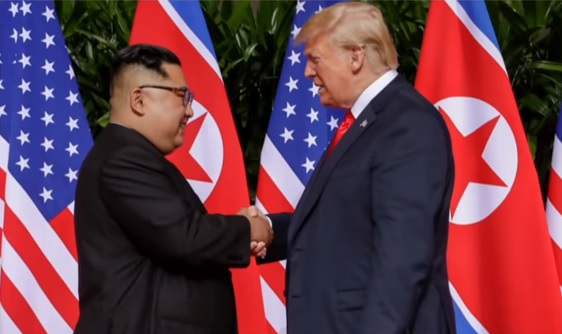President Donald Trump made history when he became the first sitting president to meet with the leader of North Korea. The result of the meeting was a commitment to “work toward complete denuclearization of the Korean peninsula,” and that the United States would provide “security guarantees” to the Kim regime.
There was much confusion after the meeting as the main points of the agreement seemed vague at best. Most had to do with both countries committing to improve relations with one another.
The biggest news to come out of the meeting was Kim Jong Un’s promise to denuclearize his country in exchange for lifting the economic sanctions that have crippled the country for the last several decades.
Critics were quick to question just how and when all of this would happen. Was North Korea serious this time after lying about denuclearization before? Would Trump lift any sanctions before the process was complete? What if North Korea reneges on the deal?
All of these are valid questions. Secretary of State Mike Pompeo tried to set the record straight with what is expected of Kim Jong Un if the United States were indeed to lift sanctions.
“President Trump has been incredibly clear about the sequencing of denuclearization and relief from the sanctions,” Secretary of State Mike Pompeo told reporters after meeting South Korea’s president and Japan’s foreign minister in Seoul.
“We are going to get complete denuclearization; only then will there be relief from the sanctions,” he said.
Seems pretty cut and dry. Only complete denuclearization will do. If that takes several years, then the sanctions will remain until then.
Sounds like appropriate motivation for North Korea to move as quickly as possible if they intend to hold up their end of the deal.
What about already built nukes?
One thing missing from the denuclearization plan is what is to be made of the country’s current nuclear stockpile? North Korea is estimated to have anywhere from 10-60 ready made nuclear weapons and an undetermined amount of ballistic missile delivery systems.
Would those be dismantled? If so, how does that play into the denuclearization timeline? Usually, decommissioning and destroying that many completed nukes takes years, if not decades.
Would there be interest in turning over the bombs? It would be hard to imagine countries like China and Russia just allowing the United States to confiscate North Korea’s nuclear weapons.
That part of the process could throw a wrench into things. The questions surrounding just how many nukes have been made over the years must be answered. Accounting for those will be necessary to avoid the potential of a nuke reaching the black market during this transition.
The North Koreans seem as sincere as ever about denuclearizing and being welcomed into the international world. Decades of sanctions have had an immensely negative effect on the economy and it might have finally reached a breaking point.
Kim Jong Un may also realize that with advancements in technology, it is only a matter of time before he is unable to keep his country secluded from the outside world. If the population were to learn how they are essentially prisoners in their own country, a revolt would be all but inevitable.
Trump has hailed his tough rhetoric as getting us to this point with Kim. Standing by hard deadlines and proof of progress is the only way to ensure that he is able to follow through on denuclearizing the Korean peninsula.

